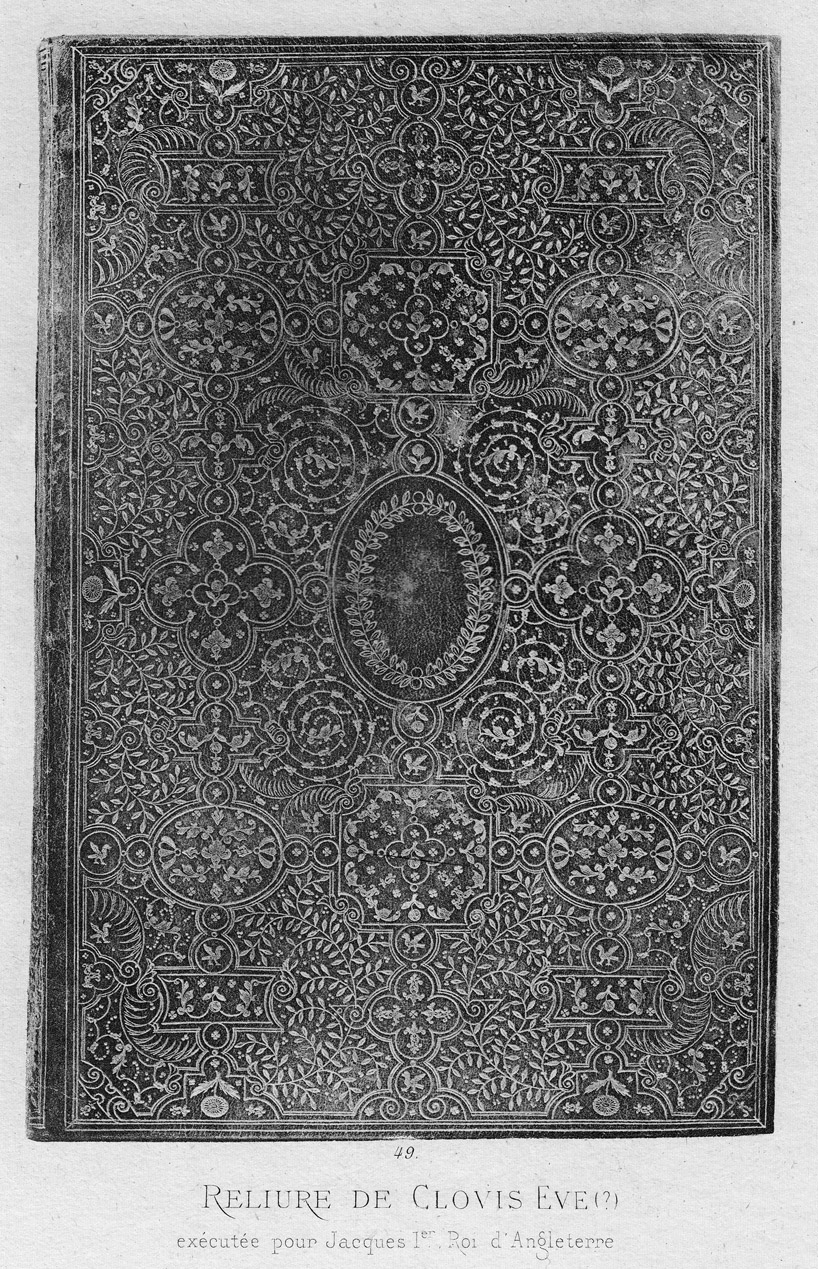

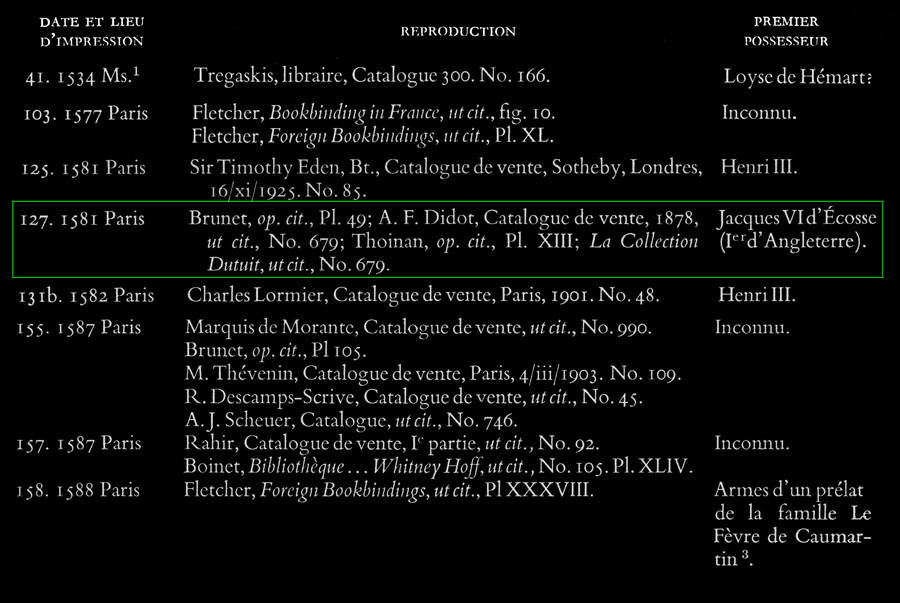
| The reproduction shown above comes from Pierre Gustave Brunet's La Reliure ancienne et moderne Paris 1884. A collection of 116 photo engravings of the finest examples of French bookbinding produced from the 16th to 19th centuries. Compiled by one of France's most renowned bibliophiles, the reproductions portray works executed with lavish attention to detail by master bookbinders such as Padeloup, Clovis and Nicolas Eve, le Gascon, and Nicolas Derome. In addition, since these works of art belonged to notables such as Jean Grolier, François Ièr, Diane de Poitiers, Louis XIII, Mazarin, and Cosimo de Medicis, to name a few, their value rendered them inaccessible to the scrutiny of most bibliophiles. Therefore, through the precisely reproduced plates in this album, Brunet intended to give bibliophiles the opportunity to acquire a deeper knowledge of the details and artistry of the original bindings and also to appreciate the progress of the art through the centuries. In red, brown, or black-and-white, the plates are from the Bibliophile Français (1808 - 1873.) The entire catalogue can be found on Wikipedia The binding shown in Brunet's plate 49 is No. 127 in Hobson's inventory of fanfare binding reproductions, and he lists a date for it of 1581, here we see the same marguerite fleuron as found on No. 103 |
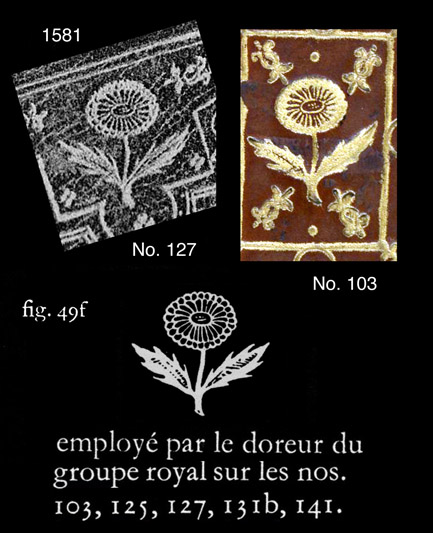
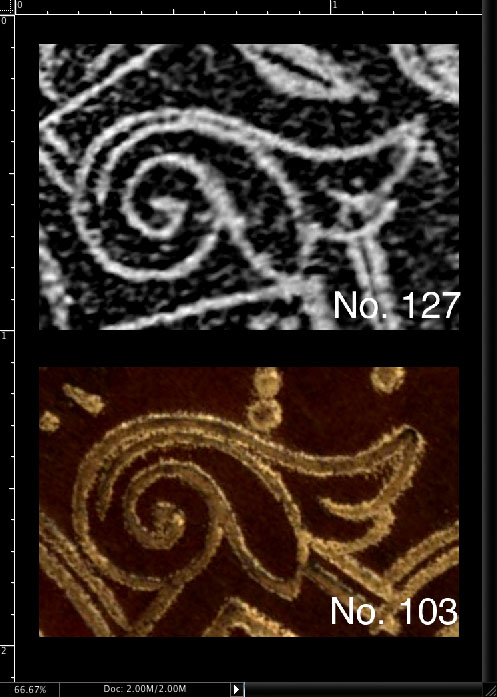
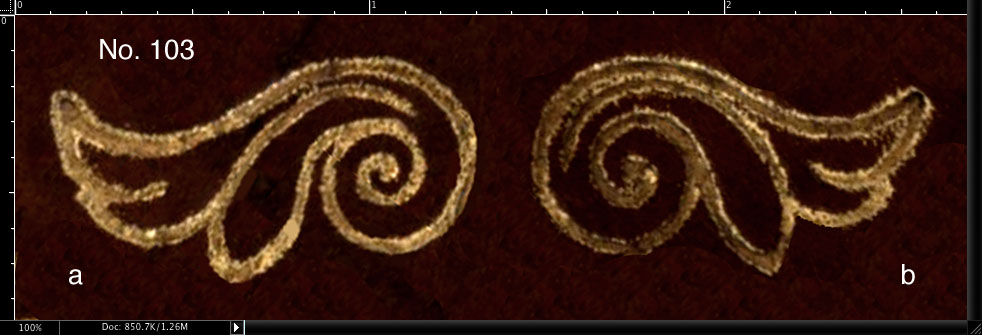
| In his illustrations of various imprints from fanfare bindings, Hobson did not include this model of volutes with wings that he has otherwise called volutes a queue.These ornaments do not appear in the early bindings from this workshop judging from our first binding in this group #124 (Hobson No. 110) with a date of 1578. This may be very significant. I have often wondered when the first examples of these tools first appear. They become every fanfare binders favorite tool for the next 150 or more years. In the late fanfare period of Hobson , that runs from Mace Ruette and the early pointille bindings to Padeloup in the 18th century, these scroll wings are found on virtually every fanfare. Below in Comparative Diagram 5, I show two bindings from 1560-61, these could be considered primitive fanfares and within the decoration we can see scroll wings in a developmental phase as well as early forms of the volute tools shown in Comparative Diagram 4, 5 and 6, below this I have included Hobson's fig. 49m these double scroll ends are found in many fanfare bindings from the most primitive to those in the 18th century. I have looked at this issue of scrolls some time ago (June 2006) on this page as they relate to engravings and title pages from this same period. |
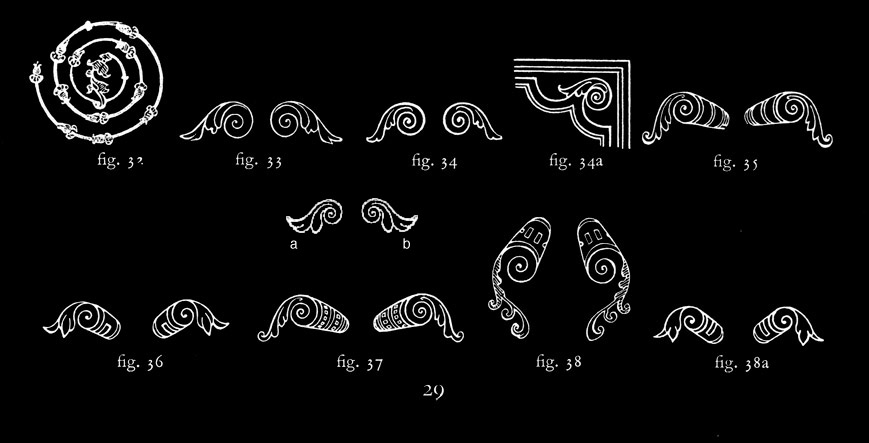
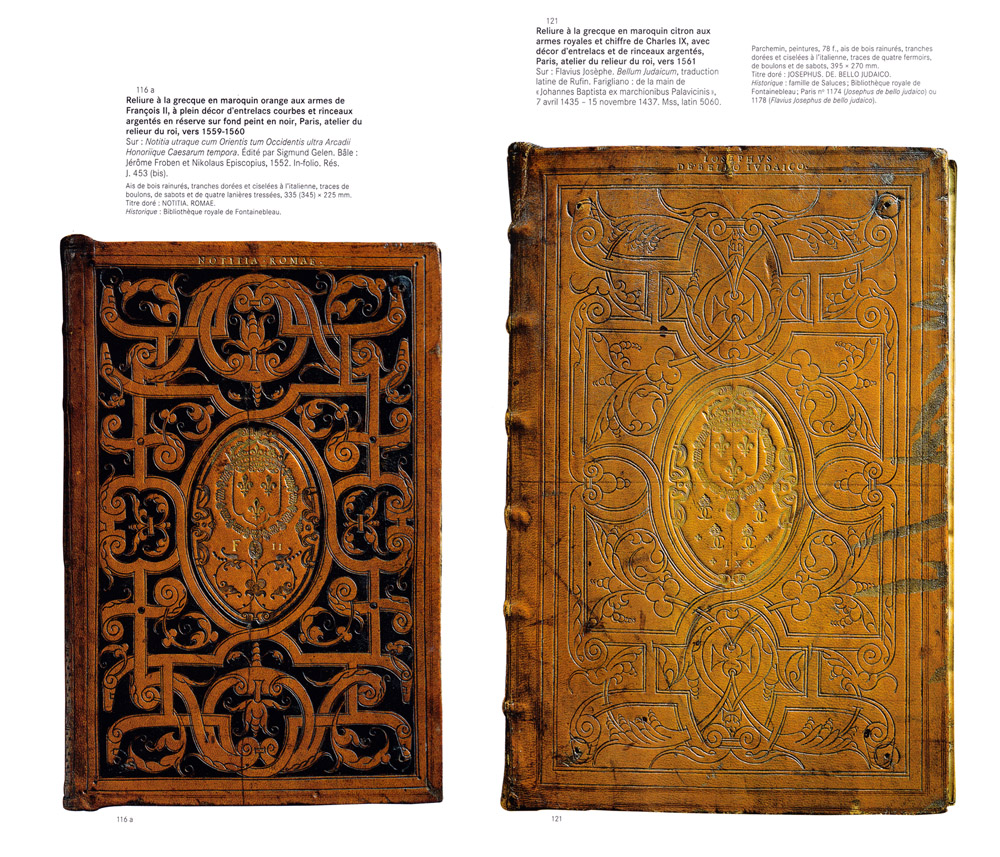
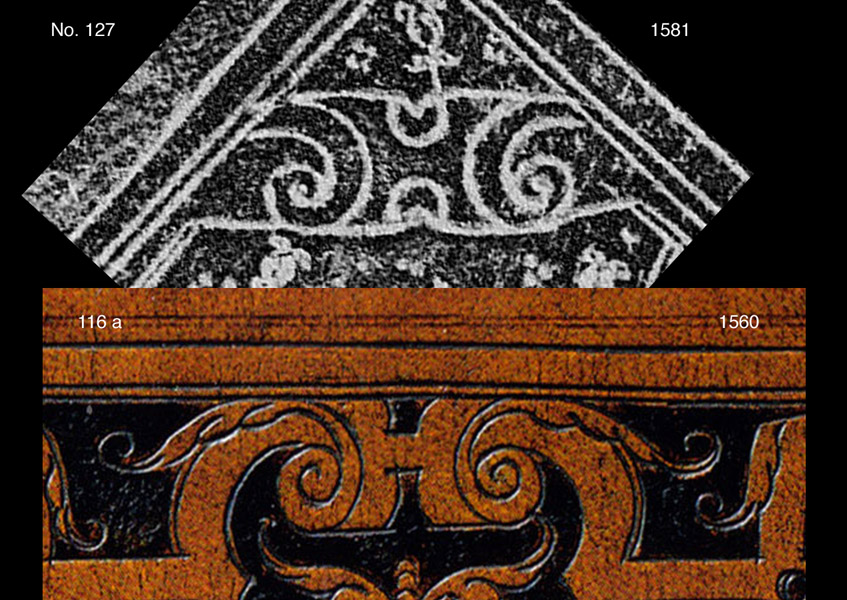
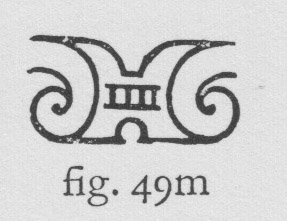
| I can see that we could spend hours looking at all the No. 127 tools and comparing them with similar tools from Royal bindings that appeared 20 years earlier. In their 1999 masterpiece RELIURES ROYALES DE LA RENAISSANCE Fabienne Le Bars and Marie-Pierre Laffitte do not identify exactly the binder who fashioned the bindings shown in Comparative Diagram 5, other than atelier du roi. According to the BnF, Gomar Estienne was officially the Kings binder from 1547 to at least 1556 : Titulaire de la charge de relieur du roi au moins de novembre 1547 à juin 1556 (date du dernier acte où il est cité encore vivant) and they show him listed as being there up till 1559: Atelier de Fontainebleau (1545-1552), Atelier du relieur du roi (1547-1559). Under the heading of Atelier du relieur du roi, Atelier de reliure dirigé par le relieur du roi. we find this list: Étienne Roffet (1539-1548), Gomar Estienne (1547-1559), Claude Picques (1555-1578), Nicolas I Eve (1578-1582), Clovis I Eve (1584-1633). Thus it is tempting to think that Claude Picques was the binder and perhaps originator of the first fanfare bindings. On the next page we are going to get side tracked into looking at this question. |
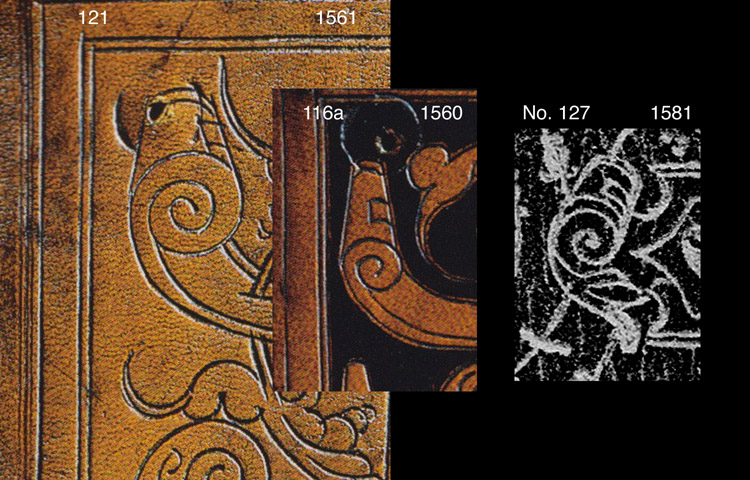
| click on this link to see the next page: Did Claude de Picques invent the fanfare style? |
| information about the author | return to the home page of VIRTUAL BOOKBINDING |